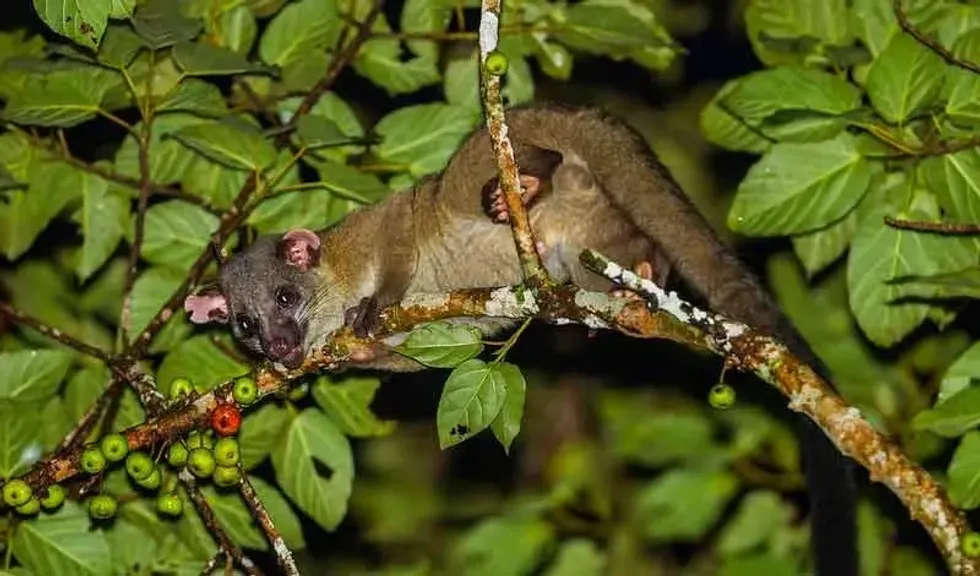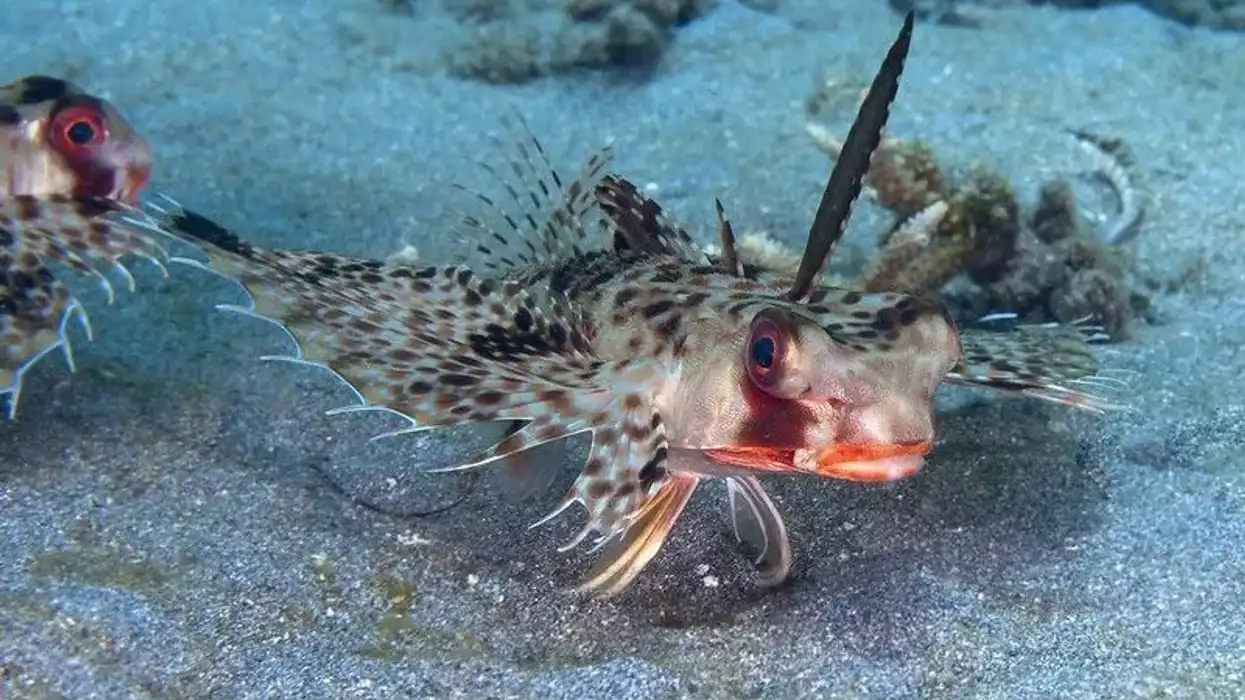The Asian palm civets are animals that are native to the southern Asia. Their scientific name is palm civet Paradoxurus hermaphroditus.
Their natural habitat is the forests, but because of deforestation, they have lost their habitat, and dwell in parks and suburban gardens. The common palm civet is not a very attractive animal.
They have a coarse black fur with greyish coats and white coat under eyes, a spot on the side of the nostrils and a line on their forehead.
The common palm civet has a tail that is nearly the size of their entire body. They are very famous for Kopi Luwak coffee which is why they are being traded, as it’s one of the costliest coffee beans in the world.
The Asian common palm civets are solitary creatures that do not like to stay in groups and only mingle and socialize during the mating period. They are also slow walkers and take the help of trees to speed up their movements.
A common palm civet feasts on palm flower sap, berries, and pulpy fruits as their natural habitat is on fruit trees. Due to their fondness for palm fruit trees and palm sap, they are also known as 'toddy cat'.
There are different types of civet species that can be found across their population in southeast Asia. After you are done reading this article on common palm civets, do check out our articles on African civet and masked palm civet.
Asian Palm Civet Interesting Facts
What type of animal is an Asian palm civet?
Asian palm civets are found mostly in Southern Asia.
The common palm civet is a type of mammal with a slender, compact body that is seen to be covered with coarse, rough, shaggy hair with a natural greyish color.
The Asian palm civets have a white mark that is extended across the forehead with a small blemish under the eye, small spot-like marks on both the nostrils and a dark line between the eyes. The common palm civet can have three coats of black on their body and, as such, they are not very appealing to the eyes.
It might come as a surprise, but one of the most expensive coffees, 'kopi luwak', is prepared from partially digested coffee cherries that pass through the digestive tract of an Asian palm civet.
What class of animal does an Asian palm civet belong to?
The Asian common palm civet belongs to the class mammalia, same as humans. This is because they give birth to young ones.
How many Asian palm civets are there in the world?
Concerning the population of the Asian common palm civet, the number is unknown as they come under the Least Concern category of the conservation status given by the IUCN.
Where does an Asian palm civet live?
The Asian common Palm civet (Paradoxurus hermaphroditus) usually lives in the forests, seasonally flooded peat swamp forests, mangroves, oil palm and teak plantations. These are considered to be their primary habitats. The Asian palm civets are also seen in parks, and suburban gardens where the availability of fruits and fig trees are seen.
What is an Asian palm civet's habitat?
The Asian civets have a historical range that include the tropical rainforests of southern India, Sri Lanka, southern China, and few other forests of Southeast Asia. The Asian palm civets have well-adjusted and adapted the high heat conditions in these areas as they have experienced the tropical climate for a long period of time.
Deforestation and the clearing of the oil plantations have proven to be a big threat to the Asian palm civet and their habitat. When there is a loss of habitat for the Asian palm civet, there is a disruption in the process of finding food and having a viable breeding population.
Despite all the deforestation, the Asian palm civet has shown great adaptability.
Who do Asian palm civets live with?
The Asian palm civets are solitary animals that love spending time alone and only participate with others during the period of mating. After the mating process, they go their own ways. They like to hunt by themselves and don't share their food with others.
How long does an Asian palm civet live?
The Asian palm civet has a long lifespan of 15-20 years. They adapt to any habitat closer to their natural habitat, hence, living a longer life as compared to their close species. It has also been reported that the Asian palm civet lives up to 22 years in captivity.
How do they reproduce?
Since the Asian palm civet is a solitary animal, relatively few people have noticed males and females mating. Except for the time of mating, the Asian palm civets are seen alone.
During the mating process, the male civet will mount the female civet for five minutes and the males and females get back to their territories when they are done mating. The gestation period lasts for two months and the female civet gives birth to two pups as an average litter.
What is their conservation status?
As far as Asian palm civet conservation status is concerned, there is no need to worry about the future of the Asian palm civet as none of the civet species features in the list of endangered animals. There is ample population of different species of palm civets present across large regions of Southeast Asia.
Asian Palm Civet Fun facts
What do Asian palm civets look like?
The Asian palm civet is rather unpleasant to look at due to its greyish black fur and the slender, elongated body structure. They have a small white patch under the eye while they also also have a white mask spread across its forehead.
While the body of the the Asian palm civet is around two feet in length, it has a long tail which is almost as long as the body. The tail not only provides it with dexterity but is also used as a weapon against predators.
How cute are they?
Some might Asian palm civets are cute due to their small face with dog like eyes that twinkle. But still you cannot change the fact that their fur and body structure make them rather unpleasant to look at.
How do they communicate?
Asian palm civet are solitary creatures and only communicate through body odors. When they are stressed or upset, they produce an odor from their anal region. They communicate and identify other animals by their perianal gland secretion.
How big is an Asian palm civet?
An Asian palm civet is 17-28 in long and weighs 3-10 lb; making it a small mammal that can be easily preyed on by tigers and other big cats.
How fast can an Asian palm civet run?
The Asian palm civet are slow runners and use the help of the tree branches to speed up their pace.
How much does an Asian palm civet weigh?
The Asian palm civet weighs between 3-10 lb or 1.4-4.5 kg.
What are their male and female names of the species?
Both the males and females Asian palm civet are known as 'palm civet' irrespective of the gender they belong to.
What would you call a baby Asian palm civet?
Every Asian palm civet baby is called a 'pup' irrespective of the parent species.
What do they eat?
The Asian palm civet diet comprises of mature fruits such as naseberry, mango, rambutan, and coffee and even small mammals and insects, making them omnivorous. They are primarily found on palm trees or other fruit trees where they feast on a diet of palm juice.
When fermented, the palm juice becomes a sweet liquor known as 'toddy'. This sweet liquor can be consumed by humans also. Their diet also includes cherries and berries of different types.
Are they dangerous?
The Asian palm civet can prove dangerous at times due to their poisonous perineal anal secretion that can be extremely harmful. They also have sharp claws and teeth that can prove to be dangerous at times for predators.
Would they make a good pet?
Civets are very hostile animals and display aggressive behavior, especially towards human beings and may require patient owners who understand them. The Asian Palm civets have been made pets by many and some do enjoy a pet Asian palm civet, these animals are unique, challenging pets.
Did you know...
Asian palm civets can also feed on a palm flower sap which gets fermented to become a toddy wine or liquor. Due to this unique habit, the Asian palm civet is also known as 'toddy cat'.
One of the most expensive coffees in the world 'kopi luwak' is prepared from coffee cherries that pass through the digestive tract of Asian palm civet.
Common palm civet thrive on fruit trees, especially palm trees or fruit trees.
Most civet species are, in fact, related to mongoose, but look like cats.
How do Asian palm civets ward off predators?
The Asian palm civets are solitary animals that dislike being in company. As a result, they exhibit aggressive behavior at times. These small animals ward off the predators by secreting some substance from their perineal gland which is poisonous to other animals. They also use their sharp claws for defending themselves against any threats.
Asian Palm Civet Coffee
Kopi luwak is a type of coffee for which the Asian palm civets are traded. This is one of the most expensive coffees in the world which is produced after an Asian palm civet cat eats the coffee cherries and excretes half-digested beans.
These coffee beans are also known as civet coffee. The cherries undergo the process of fermentation when they pass through a civet's intestines, and are collected after excretion.
The price of Kopi Luwak ranges from $500 and upwards. This has also become a trend and is consumed frequently by many.
Here at Kidadl, we have carefully created lots of interesting family-friendly animal facts for everyone to discover! Learn more about some other mammals including woolly monkey, or raccoon dog.
You can even occupy yourself at home by drawing one on our Asian Palm Civet coloring pages.









